Are you considering visiting the Golden Circle in Iceland in winter? I recently did a tour of the famous Nordic loop in January, and am here to share our experience!
Our boots crunched on the snow as we ambled from the coach tour to the viewing point of Gullfoss Waterfall.
In the winter months, the path down to the waterfall isn’t accessible, so we walked along the top of the canyon, gazing over the snow-covered rocks plummeting toward the half-frozen waters.
Looking around from the canyon, the rugged landscape was predominantly gleaming while, with a few rocky patches creeping through the snow. The sun was still low in the sky, having only risen around half an hour prior.
“Iceland’s a whole other world in the winter,” our guide told us, as we caught him up to take a glimpse of the ice plunging down the cliff. “It’s dramatic, but it’s my home”.
We were on a Golden Circle tour of Iceland in January, seeing as much as we could of the famous landmarks on a guided tour.
Here’s how we found it, with information about tours, whether you can self-drive and tips for what to take.
What’s the Golden Circle in Iceland like in the winter?
Internationally renowned for its crashing waterfalls, shooting geysers and plummeting craters, the Icelandic Golden Circle is one of Europe’s ultimate road trips. While it’s most commonly visited during the spring and summer, in the cold season, visiting this part of the country is a completely different experience.
What’s the Golden Circle?
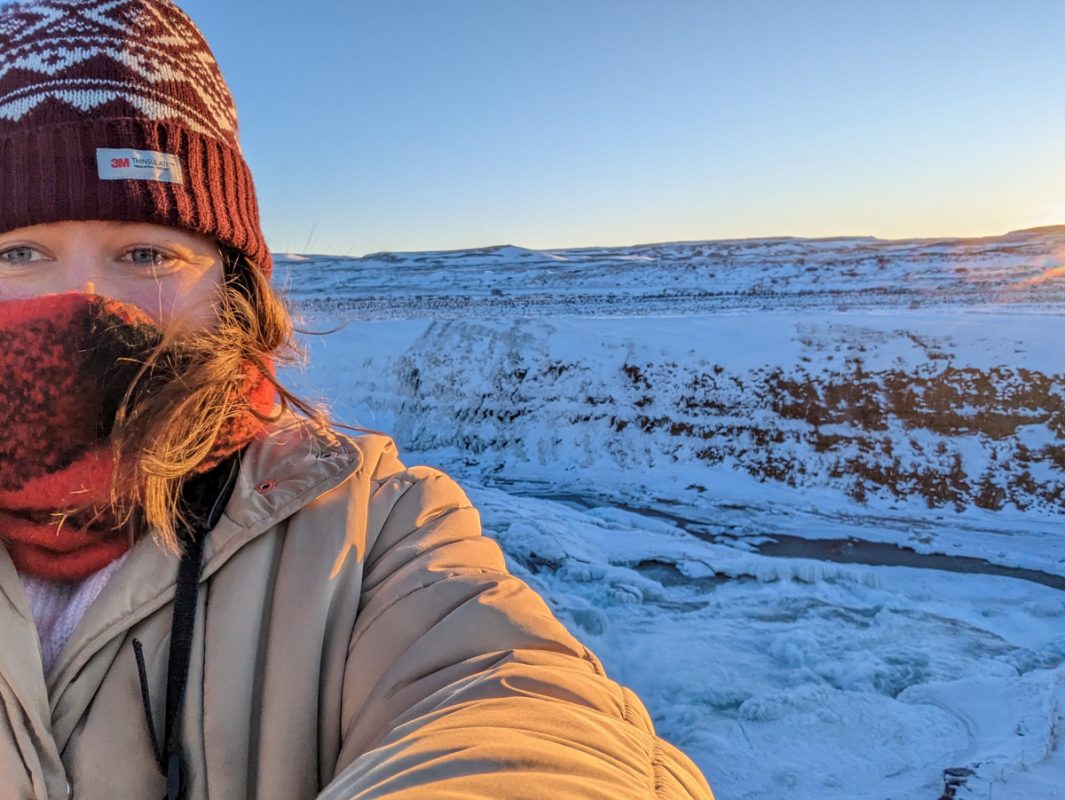
The Golden Circle is a famous loop road trip in Iceland, renowned for geological features like dramatic waterfalls and exploding geysirs. It’s one of the most popular things to do in Iceland in any season!
Why visit the Golden Circle in winter?
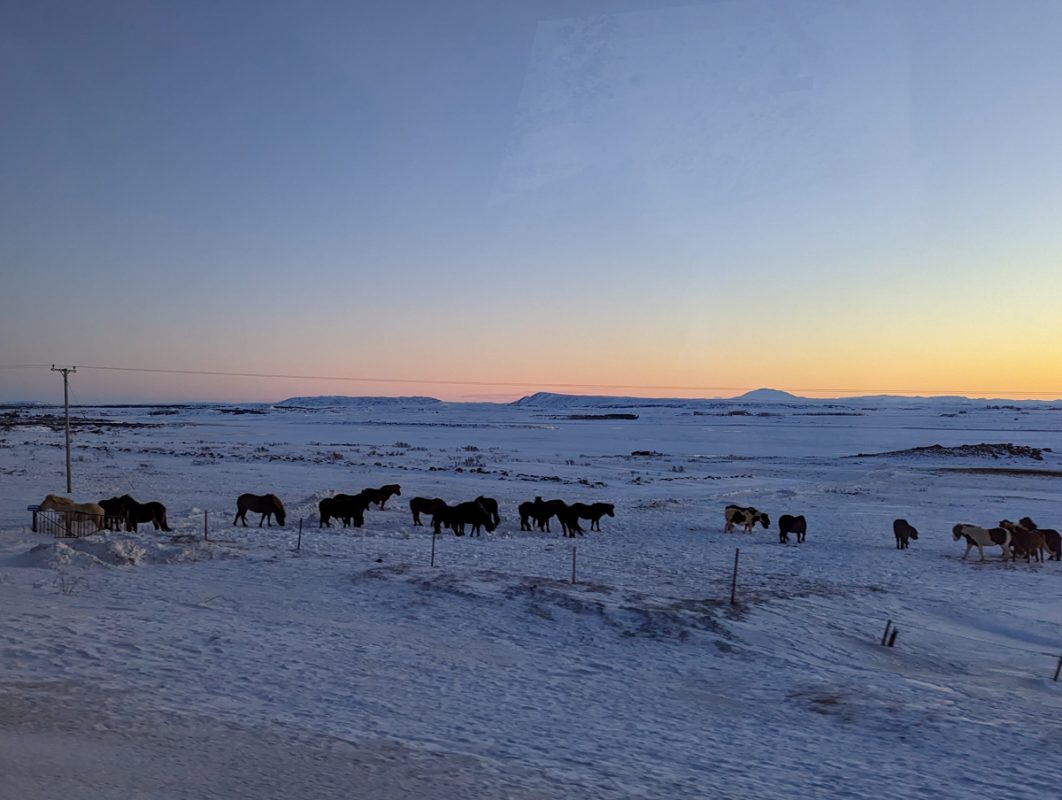
When frosty weather descends on the attractions of the golden circle, the attractions are enhanced, blanketed with a carpet of snow and glowing in the winter sunshine. It’s truly a sight to behold.
There are limited daylight hours, but this means that you’ll enjoy both sunrise and sunset on your day trip; this close to the Arctic Circle, these bi-daily spectacles last for hours.
Some parts of the route are a little frosty (largely the Kerid Crater, which I will admit looked much better in the non-frozen photos!), but in the winter season, you’re graced with sunrise and sunset only a few hours apart, dancing on the snow as it illuminates the other-worldly landscape.
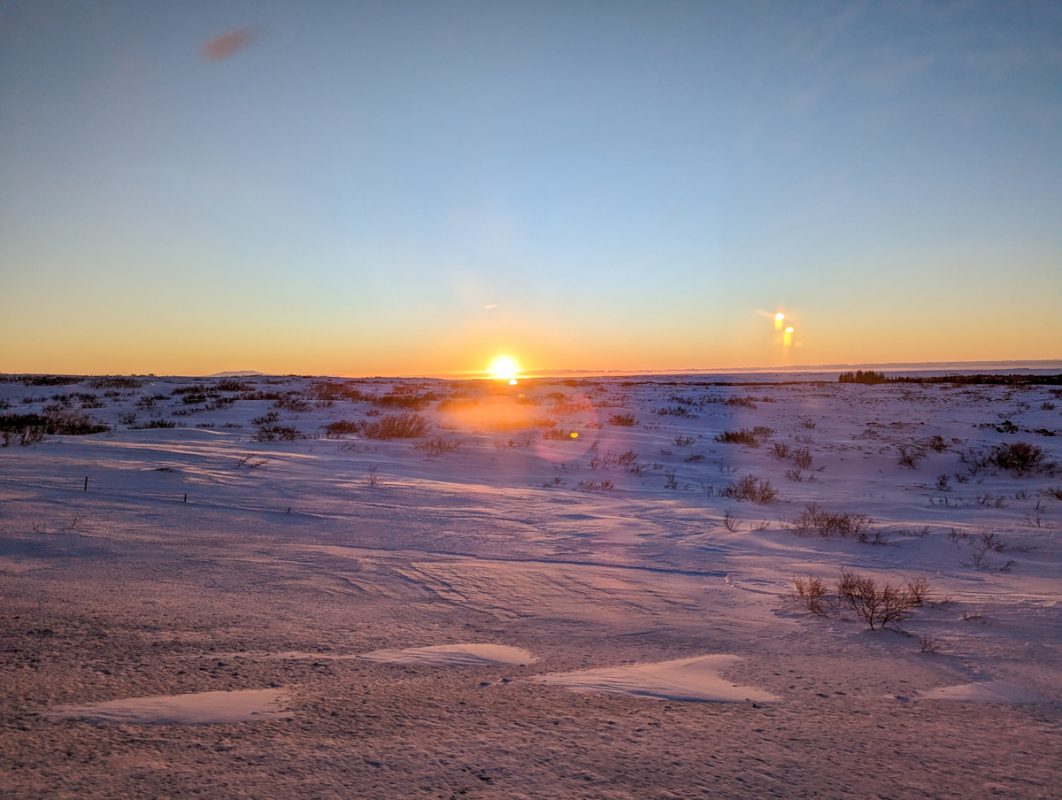
During the five or so hours of daylight, you’ll enjoy bright winter sunshine that enhances each beautiful sight.
So, while the Golden Circle is different during the winter than in the summer season, that’s not to say that it’s not worth visiting at all.
We had a magical day on the route and I’d highly recommend experiencing the glow and gentle light of these Iceland staples if you’re visiting from November to March.
Self-driving vs tour of the Golden Circle
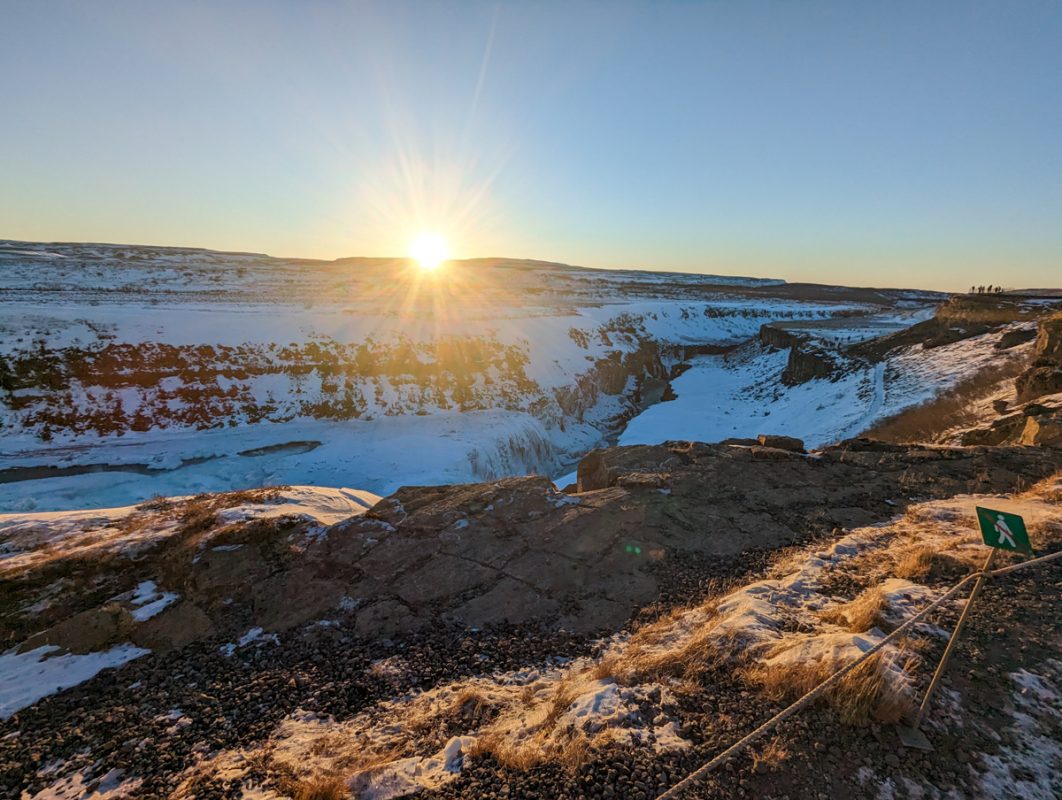
If we were visiting Iceland in the summer months, we may have chosen to hire a car and drive ourselves, but we ultimately opted to do this tour of the Golden Circle from Reykjavik rather than self-drive simply because neither of us felt comfortable driving on snowy and icy roads – even Reykjavik was very snowy when we were there.
Icelandic drivers are incredibly experienced at navigating icy, seemingly perilous roads. While the main road conditions were good, we were fortunate enough to be visiting on a dry day and the car parks were icy!
Our guide told us that sometimes in the winter, bad weather can mean that they can’t even see the road in front of them. There are tall sticks on either side of the road, and he described how, if there’s a blizzard or other adverse weather, he looks out for these instead.
Of course, if the weather conditions are particularly bad you might want to delay your day trip, but the weather forecast isn’t always correct and conditions can change quickly.
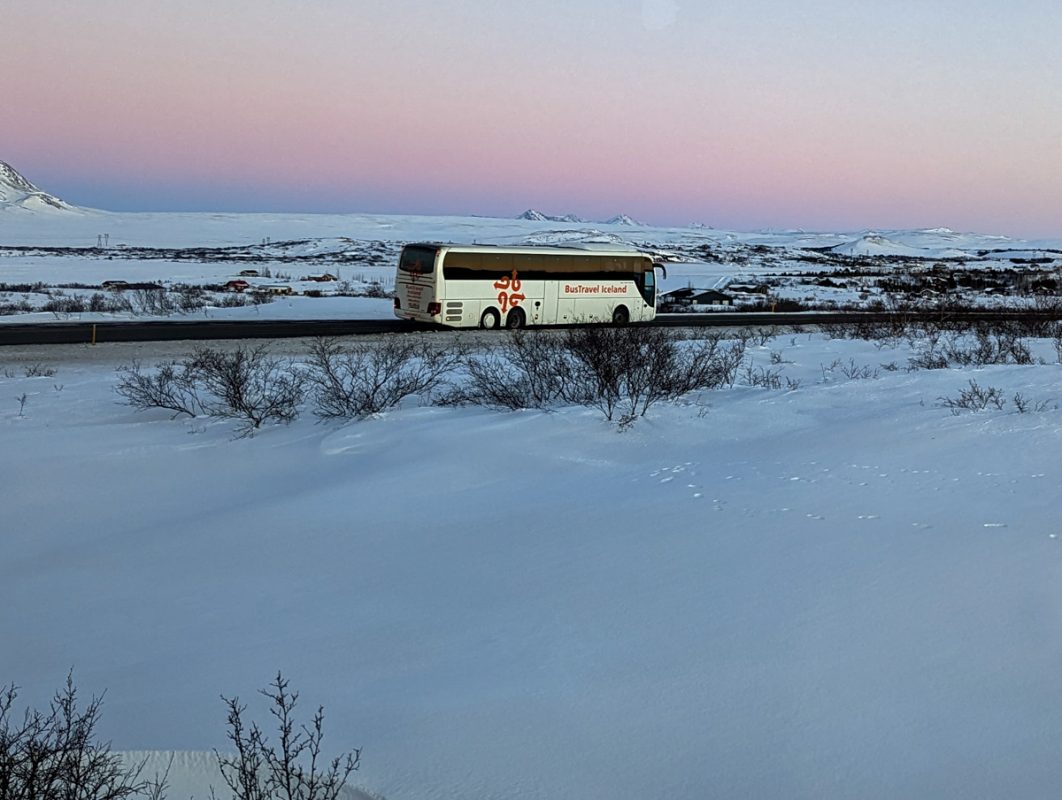
If you have experience driving in snowy conditions and are comfortable, you might be ok self-driving in the winter. However, if you have any reservations, I recommend taking a tour.
Of course, if you take the tour option, you’ll also learn a little more about the places that you’re visiting!
Our guide was great and gave us lots of insight into life in Iceland.
Review of the tour
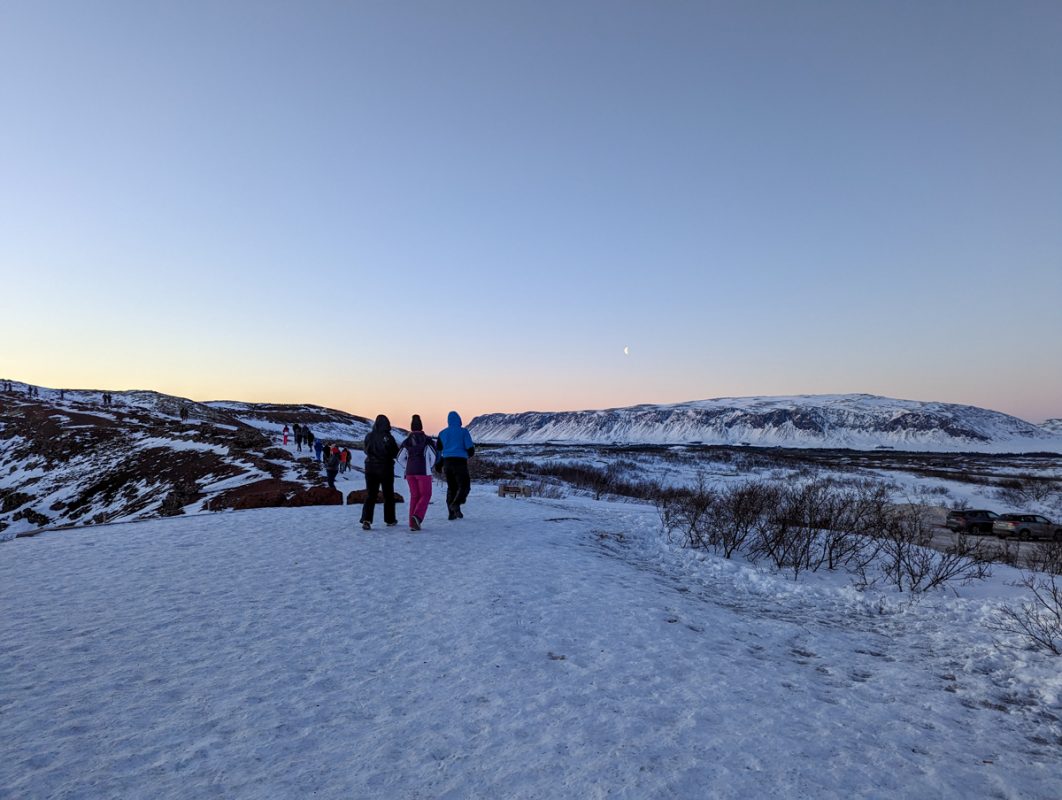
We did this tour as part of our winter city break to Reykjavik in January.
After enjoying a buffet breakfast at our hotel, we set out on what felt like a midnight stroll – it was 8:00 am, but the sun was showing no signs of coming up.
The tour departed from a bus stop closer to the city center, a 20-minute walk from where we were based (the Reykjavik Lights Hotel).
At the bus stop, we waited a little while before two buses pulled up around the same time (with another reportedly on its way – a lot of people seem to book these trips!).
One of these had a logo on the side of the bus, while another didn’t.
We were told that the bus would have a logo on, so we made a beeline for the first bus, to be eventually told we were on the second. So it could be a plain bus as well!
Once seated, the coach set out to its first stop, Hveragerdi.
The guide kept us entertained with interesting stories along the way, telling us about Icelandic culture and history, including the Cod Wars between Iceland and the UK in the second half of the 20th century (something that I didn’t know much about!), how Iceland was originally called “Snowland” and the country’s long struggle for independence from Denmark.

The stops ranged from 20 – 90 minutes, which was enough time to see each attraction without getting too cold (the longer stops had information centres or cafes to warm up in).
The guide took us to each stop, told us a little about it as a group and then hung around for any questions. He told us that it was a snowy year by Icelandic standards and that the year before they barely had any snow at all!
The tour visited the main highlights of the Golden Circle (which I go into in more detail below). Of course, these are the most touristy spots, and you won’t find any of them to be absolutely deserted – particularly because the tour bus was another big group.
However, none of the attractions were too busy – which I’m guessing is because Iceland is quieter in the winter months.
We also found the driver to be very safe and helpful.
Click here to read more about the tour and to book.
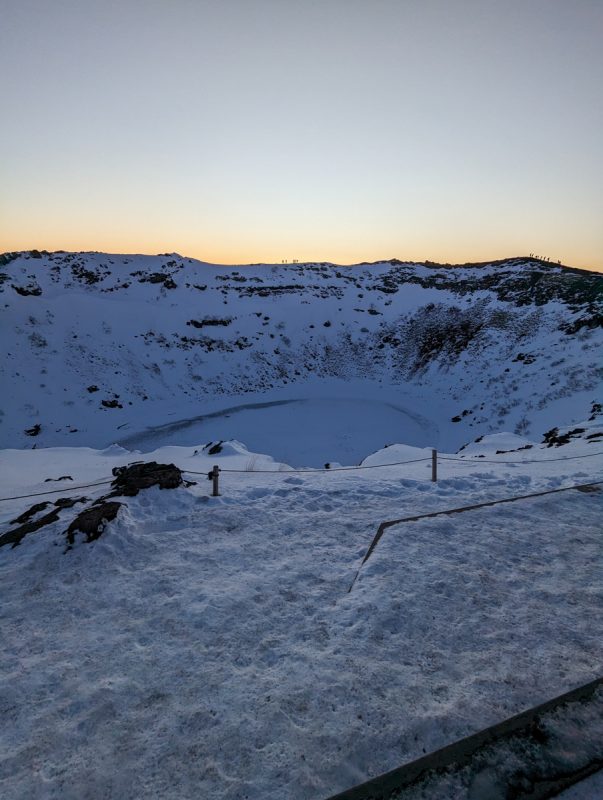
All in all, the tour was organised excellently and we felt like it was good value for money to see a slice of Iceland.
If you really want to see the country’s hidden gems with not a single other tourist in sight, then this tour isn’t it – but it’s a great option to see some of Iceland’s most famous natural landmarks and to give you an insight into this Nordic Land.
You can check the availability for the tour by clicking here or using the box below!
Golden Circle tour stops
Here are all of the Golden Circle tour stops in more detail:
Hveragerdi

This name means “town of hot springs” in Icelandic, but you don’t actually take a dip in any springs while you’re here! In fact, you just head to the service station.
At first glance, this seemed like a normal service station, but there’s so much more to Hveragerdi than meets the eye.
It’s a quick pit stop where we could get some breakfast if we hadn’t already had it, grab a coffee (mine was around $3.50)…. and stand between two tectonic plates!
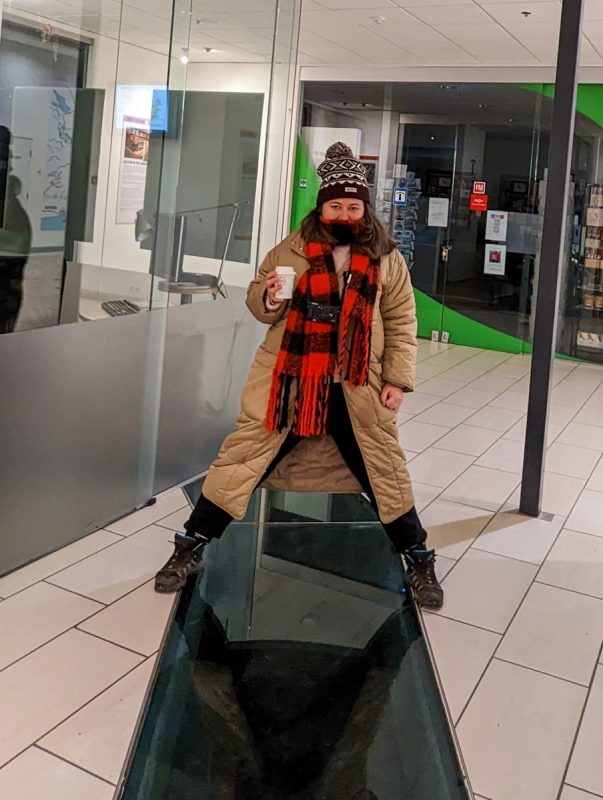
That’s right, this very fancy service station straddles the North American and Eurasian tectonic plates – so I stood with one foot in North America and one foot in Europe! There’s also a museum where you can learn a little more about plate tectonics.
Kerid Crater
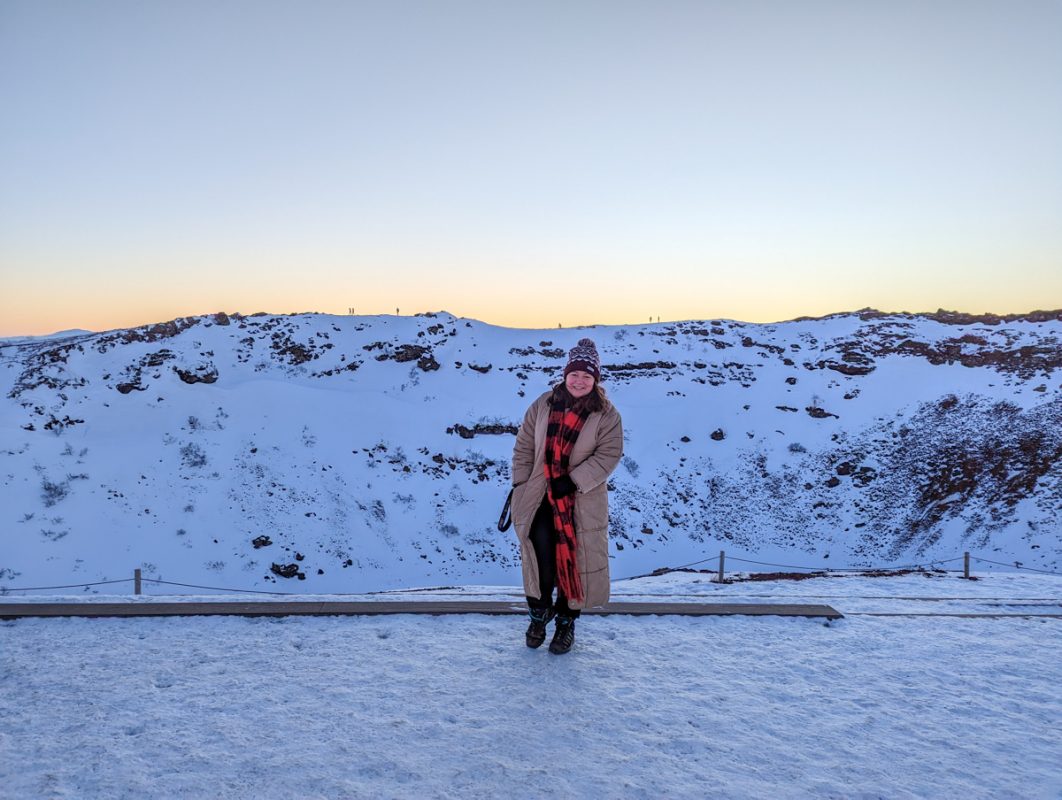
Our first “official” stop on the Golden Circle tour was Kerið Crater.
This is a beautiful crater – but it was completely covered in snow, so we couldn’t see the deep blue lake (like the photo below) and the guide didn’t recommend the rim walk due to the ice.
While snow isn’t guaranteed when you’re in Iceland in winter, it’s quite likely that you’ll experience a frosty sight if you’re here in the cooler months too.

However, it’s worth checking out the panorama and we loved it because it was the sun was just rising (around 10:30 am in January). It was our first glance at Iceland’s dramatic scenery in daylight!
I’d definitely say that Kerid Crater is better in the summer months – or at least when it isn’t snowy, but it’s was still cool to check out in the snow too.
Gullfoss Waterfall

This natural phenomena is a completely different experience in winter – but it was still breathtakingly beautiful.
It was a nice 10-minute walk from the bus to the waterfall viewing platform, which gave us time to look at the surroundings (without freezing!).
We walked above the waterfall as the path down to the waterfall was closed, admiring the ferocious river, which was only partially frozen (I’m guessing due to the geothermal water that Iceland is famous for) and the intergalactic landscape, which snow only added to.
You couldn’t see the waterfall in all its glory, but you could look over the gorge, enjoy the river and get a glimpse of the waterfall. But the epic panorama of the natural surroundings made this stop unforgettable for me!
Icelandic horses
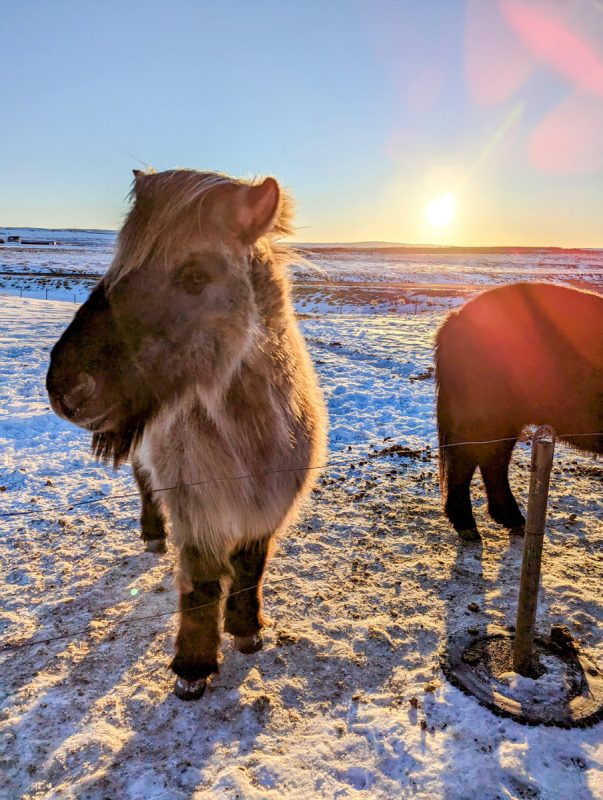
We then had a short stop on side of the road to see the shaggy horses, who have grown long fur coats to protect them from Iceland’s harsh winter. They live in a field that’s part of a horse farm.
They are fluffy and quite friendly – although that may just be because tourists feed them!
In a business-savvy move, the owner of the horses has installed a vending machine where you can buy “candy” to feed the horses (the machine even takes cards!).
Geysir

This is one of the biggest bucket-list places to visit on the Golden Circle, especially if you’re interested in incredible geothermal activity!
The Geysir, which is also sometimes known as “The Great Geysir” as all others in the world have taken their name from this one, is a spring that can erupt from the ground, due to thermal water heating up and then shooting through a narrow hole.
The Great Geysir hasn’t erupted since February 2016 (and before that, it hadn’t erupted since 2000!).
The geysir that often finds its way onto people’s Instagram feeds from Iceland is another hot spring in the area, which erupts roughly every six to eight minutes – so you’ll definitely see it plummet into the air while you’re here!
Definitely spend some time standing behind the boundary of the geysir to wait for it to soar upwards; most people stand there recording to get a shot of the geysir exploding!
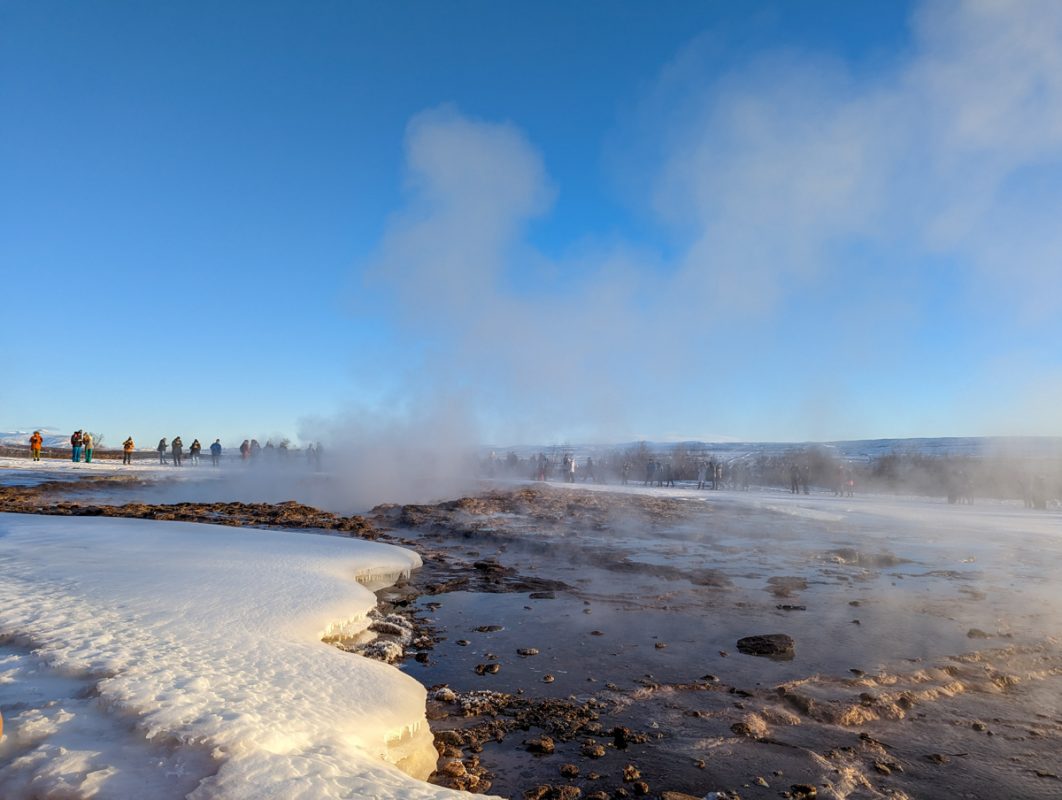
There’s a restaurant here, serving burgers (veggie burgers are available), fish and chips and soup. All meals cost from 2,000 to 2,500 Icelandic Krona, which is about $14 (for soup) – $18 (for a burger/ fish and chips) in USD.
So the prices for a burger and chips were comparable to other countries in Western Europe, but $14 for a bowl of soup did seem very steep!
We just bought coffee from here as we took a packed lunch; the coffees were reasonable at around $3 each.
The Geysir Visitor Center has some screens explaining the geography of the area, and it’s also a shopping location where you can buy everything from Icelandic jumpers to wooly hats – perfect if you need an extra layer.
But, do be aware that it’s all quite expensive!
Laugarvatin Fontana

“As you’ve all been on time to get back to the bus, I’m going to reward you with an extra stop!” Our guide told us as we departed the Geysir.
This stop isn’t part of all Golden Circle tours – but if you ensure that all of your group is on time, you could stop here too!
We stopped at Laugarvatin Fontana, which is a hot pool where thermal water is baked! The bakers put the dough into some form of hot water-resistant pot and descend it into the geothermal pools. It’s so hot that it completely cooks the bread!
You can’t buy the bread anywhere else in the world, but you can sample it at the cafe – so it’s a really unique foodie experience!
We just had a quick stop here to see the lake, a bright blue pool that glimmered in the sunshine with steam rolling off of it, but we didn’t get a chance to eat it at the cafe.
Thingvellir National Park (Þingvellir National Park in Icelandic)

The Þingvellir National Park is the only place in the world where you can walk between two continents, as it sits between two tectonic plates!
It’s a UNESCO World Heritage site encompassing the North American plate and a huge gap of “no man’s land” before the Eurasian plate looms.
Thingvellir National Park, or Þingvellir National Park in Icelandic, is also special because it is where the first Viking parliament was assembled in 930. It continued to be assembled here until 1798, and the name literally means “Assembly Plains”.
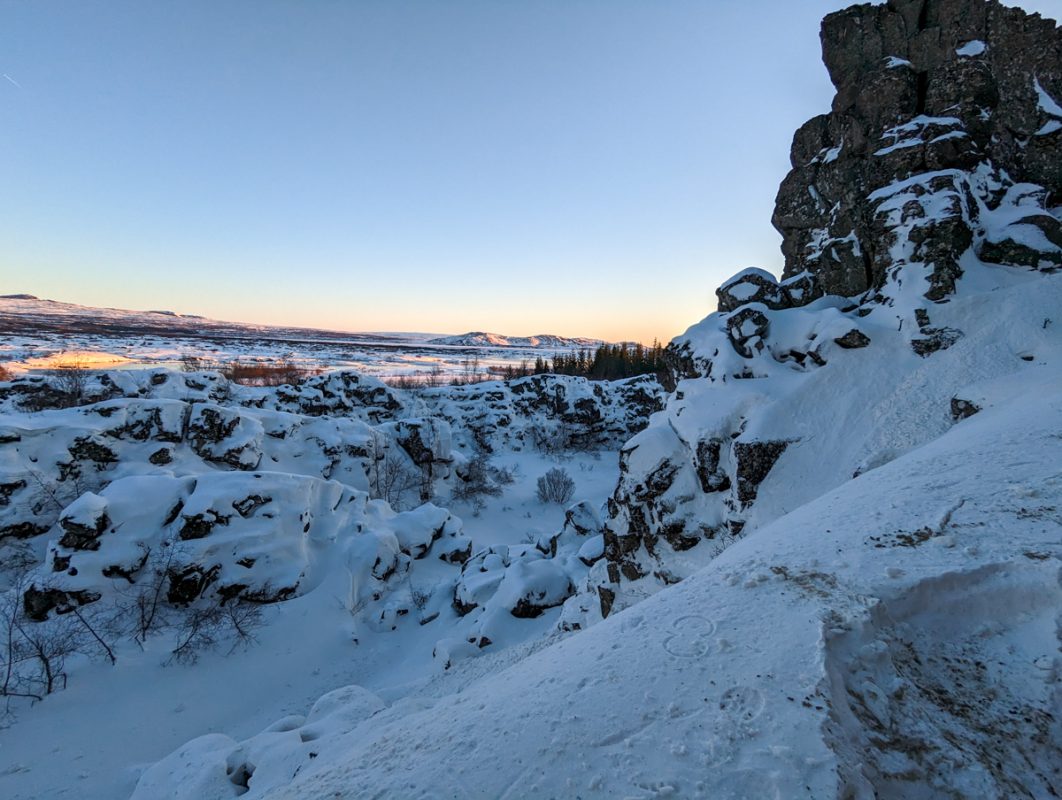
There are two car parks; the driver dropped us off at the lower car park and we hiked up to the top car park (about 15 minutes uphill).
On the way, we took in breathtaking views of the wild expanse of land, before summiting to a viewpoint to gaze at the terrain, just as the sun was setting on the horizon.
We then drove back to the capital city, which took about an hour, before arriving back to the bus stop at around 5:00 pm.
Other tour options
While we did the tour described above (click here to read more about it), I found a few other options on Get Your Guide that may interest other travellers.
All of these are available if you’re on a winter trip to Iceland – in fact some of them, which include glacier hiking or snow mobiling, are better in winter!
Secret Lagoon and Golden Circle Tour
This tour visits the main attractions of the Golden Circle along with the picturesque Secret Lagoon, where you can spend 1.5 hours relaxing in the thermal waters.
Golden Circle and Glacier Snowmobile Tour
This tour is a slightly condensed version of the route we did, with an extra glacier stop at the end.
It doesn’t include Kerid Crater or the smaller stops, BUT it does include a snowmobiling tour of a glacier – making it perfect for any adrenaline chasers!
Golden Circle and Blue Lagoon Small-Group Tour
This tour means that you can tick off two Iceland must-does; the Golden Circle AND the Blue Lagoon! It’s an easy way to see both of them if you’re limited on time.
Golden Circle and Northern Lights Tour
Another great tour if you want to see a couple of attractions in one (although do be aware that the Northern Lights are never guaranteed!), this tour encompasses the Golden Circle’s highlights along with an attempt to spot the elusive Northern Lights.
Golden Circle with Snorkel in Silfra
Yes, you can snorkel in Silfra (between the two tectonic plates) even in winter! The water will be chilly, but you’ll wear a dry suit so you won’t really feel it. This tour includes visiting Þingvellir National Park, Geysir and Gullfoss Waterfall.
What to wear on the Golden Circle tour in winter
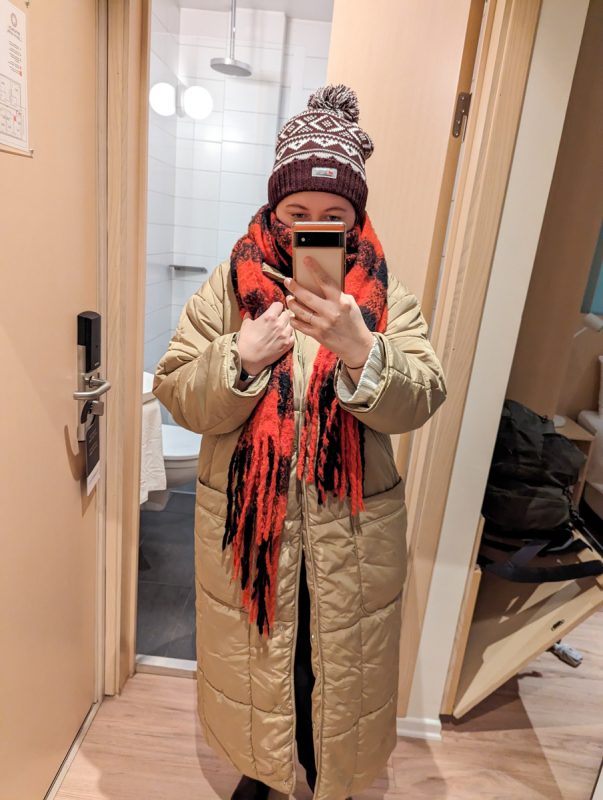
Depending on the year, the thermometer can range from around 5C to -20C or below.
In Thingvellir National Park, the temperature plummeted to -16C for us, leaving me feeling slightly inadequate in my running leggings and a cosy tracksuit combination!
If it’s looking chilly for your tour, I’d recommend wearing full ski gear – salopettes, a ski jacket and a thermal layer.
If you don’t have ski clothes, just layer up. I wore the following, and wasn’t too cold (although I could have done with one extra layer on my legs):
- Runnning leggings
- Thick tracksuit bottoms
- Long-sleeved t-shirt
- Fleece
- Thick jumper
- Thick, long coat
- Big scarf
- Bobble hat
- Base layer of gloves
- Thick gloves
- 2x pairs of socks
- Hiking boots
What to pack for the tour in winter

Here’s everything that I had in my bag for the day. I didn’t find myself wishing that I had anything else!
- Water bottle: the tap water in Iceland is among the best in the world (there’s really no need to buy bottled water – it’s the same stuff!). Most cafes will happily fill up your bottle for free, so take one along with you for the day.
- Power bank: The tour takes around eight hours and sometimes cold weather makes batteries drain faster, so if your phone struggles to last the full day, you might find it useful to have a power bank.
- Camera: Make sure that you have a way to take unforgettable photos! My phone froze a few times during our Iceland trip – I presume due to the cold – so I took most of my photos on my camera. If you want to get lots of photos, you might prefer to have two devices for taking them.
Visiting the Golden Circle FAQs

Can you do the Golden Circle tour in winter?
You can do the Golden Circle tour in winter, and while the terrain certainly looks different, it’s still well worth visiting due to the craggy, wild landscapes that are covered in snow and the beautiful sunrises and sunsets and the winter light.
What is special about Thingvellir?
Thingveller National Park is the only place in the world where you can walk between two continental plates; there’s a large divide (a no man’s land!) between the Eurasian and North American plates here. It’s also where the first Viking parliament of Iceland was held!
Does Geysir close?
Geysir is a natural site that’s free to visit any time of day – it never closes, even in winter. The Geysir center is open in daylight hours throughout the year – it’s the perfect place to warm up with a hot chocolate or coffee.
Is Kerid crater worth visiting?
Kerid Crater is worth visiting throughout the seasons, although in winter it is covered in snow, and it is the only Golden Circle attraction that I think is definitely better to visit out of winter. However, seeing the frosty crater is still spectacular!
Do you need a 4×4 to drive the Golden Circle?
Generally, you don’t need a 4×4 to drive the Golden Circle. The road conditions are usually good, but the car parks can be snowy and icy, so you might find a 4×4 useful here. You’ll need a 4×4 for many other winter road trips in Iceland.
Does Gullfoss freeze in winter?
Gulfoss freezes in winter, and the giant frozen icicles plummeting off a cliff are truly a sight to behold! However, you can’t access the bottom of the waterfall in the winter as the path is frozen; instead, you can walk along the top path to admire the view.
Can you drive the Golden Circle in December?
You can do the Golden Circle drive in December, but be wary of potentially frosty conditions. We opted to not drive ourselves because we weren’t confident in the snow and did a guided tour instead which took us to the highlights.
How long does it take to see the Golden Circle in Iceland?
You can see the highlights of the Golden Circle in one day, although if you want to spend longer at any of the sites and are self-driving you may wish to spend the night at a hotel en-route, like the Geysir hotel.
Is Golden Circle in Iceland worth it?
Whether you see the Golden Circle in winter or summer, it’s definitely worth it! With fantastic natural attractions like majestic waterfalls, the Great Geysir and the Thingveller National Park, touring around this area of South Iceland is an unforgettable experience.
Check out my YouTube video of the tour here!
Are you ready to see the Golden Circle in January?
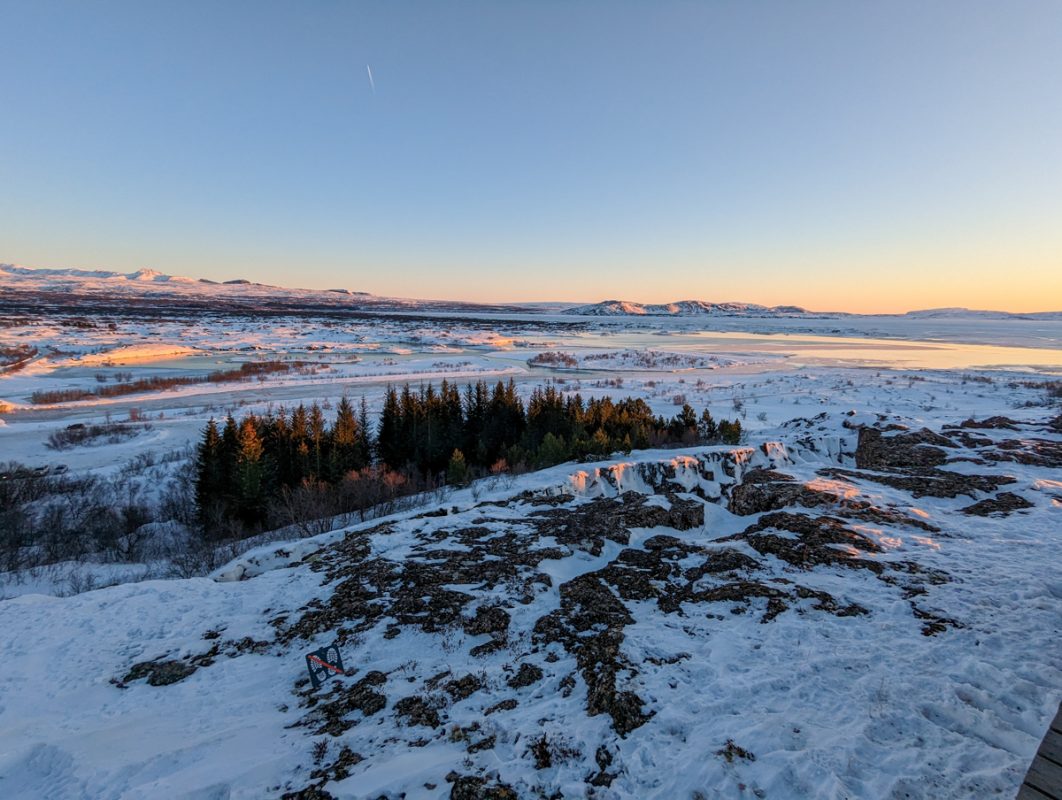
Whether you want to learn about geothermal energy, stand between two plates or see the enticing frozen Gullfoss falls, witnessing the Golden Circle in winter will take your breath away.
I hope that this complete guide has helped you decide how to see this beautiful part of the country in the darkest and coldest months of the year.
Don’t forget the other fantastic attractions in Iceland in January too, like warming up at the blue lagoon, whale watching tours, exploring the city lights and cultural attractions of Reykjavik and trying to catch a glimpse of the Northern Lights!
Check out all of my Iceland winter travel posts for more information.
